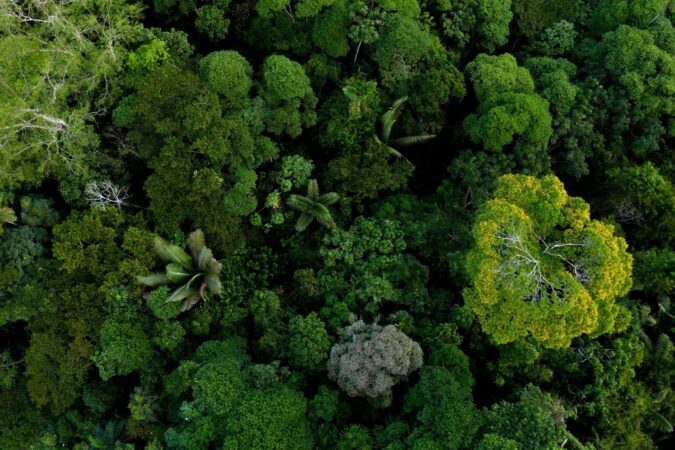In the face of accelerating environmental challenges, corporations are increasingly recognizing the importance of sustainability. A significant aspect of this is the preservation of biodiversity and the prevention of deforestation. However, to effectively implement and improve upon these initiatives, companies must rely on robust metrics and indicators that accurately measure their success. Carbon Green Investments explores the various metrics used by corporations, their importance, and how they drive continuous improvement in biodiversity and deforestation prevention efforts.
The Importance of Metrics in Environmental Initiatives
Metrics are critical for understanding the impact of corporate actions on biodiversity and deforestation. They provide a tangible way to measure progress, identify areas needing improvement, and communicate efforts to stakeholders. Without clear metrics, initiatives can lack direction and accountability, making it difficult to achieve long-term sustainability goals.
Key Metrics for Biodiversity Preservation
- Species Richness and Abundance
Species richness refers to the number of different species present in one particular area, while abundance measures the population size of these species. These metrics help assess the health of ecosystems and the impact that corporate activities have on local wildlife. Companies often partner with environmental organizations to conduct surveys and monitor changes over time. - Habitat Restoration and Protection
Metrics related to habitat restoration and protection include the amount of land restored or protected, the success rate of rehabilitation efforts, and the connectivity of habitats. These indicators show how well companies are mitigating habitat loss and fragmentation, which are major threats to biodiversity. - Genetic Diversity
Genetic diversity within species is crucial for their resilience to environmental changes and diseases. Corporations engaged in agricultural or forestry activities may monitor genetic diversity to ensure their practices do not lead to homogenization, which can make ecosystems more vulnerable to disruptions. - Invasive Species Control
The presence and control of invasive species are significant metrics. Invasive species can outcompete native flora and fauna, leading to reduced biodiversity. Effective monitoring and management practices are essential for preserving native species.
Key Metrics for Deforestation Prevention
- Forest Cover and Land Use Change
Monitoring changes in forest cover and land use through satellite imagery and GIS (Geographic Information Systems) has become a primary method for measuring deforestation. These tools provide real-time data on deforestation rates and help identify illegal logging activities. - Carbon Sequestration
Forests play a critical role in carbon sequestration. Metrics related to carbon capture by forests, such as the amount of CO2 absorbed, are important for fully understanding the climate impact of deforestation and reforestation efforts. Companies often report these metrics as part of their carbon footprint reduction strategies. - Supply Chain Transparency
Supply chain metrics involve tracking the sources of raw materials, especially those linked to deforestation, such as timber, palm oil, and soy. Transparency in supply chains helps ensure that materials are sourced sustainably. Certifications like FSC (Forest Stewardship Council) and RSPO (Roundtable on Sustainable Palm Oil) are commonly used indicators. - Community Engagement and Livelihood Impact
Successful deforestation prevention often involves local communities. Metrics in this area include the number of community members engaged in sustainable practices, income generated from alternative livelihoods, and improvements in local living standards. These indicators help ensure that conservation efforts remain economically viable for local populations.
Driving Continuous Improvement
- Setting Science-Based Targets
Science-based targets align corporate goals with the latest climate science. These targets provide a clear pathway for companies to reduce their environmental impact. By setting specific, measurable, achievable, relevant, and time-bound (SMART) goals, companies can efficiently track progress and make necessary adjustments. - Regular Monitoring and Reporting
Continuous monitoring and transparent reporting are essential for driving improvement. Annual sustainability reports, third-party audits, and certifications provide accountability and help companies stay on track. These metrics should be reviewed regularly to assess effectiveness and identify new opportunities for improvement. - Adaptive Management
Adaptive management involves using feedback from monitoring to make informed decisions and adjust strategies. This approach allows companies to respond to new challenges and data, ensuring that their initiatives maintain potency over time. - Stakeholder Engagement
Engaging stakeholders, including investors, customers, and local communities, fosters a collaborative approach to sustainability. Metrics related to stakeholder engagement can include the number of partnerships formed, the level of stakeholder participation in decision-making processes, and the feedback received from these groups. - Investing in Innovation and Technology
Innovation and technology play a crucial role in enhancing biodiversity and deforestation metrics. Companies can invest in new technologies for monitoring, such as drones and AI, to improve data accuracy and efficiency. Additionally, developing sustainable products and practices can reduce environmental impact and drive progress.
Effective metrics are the backbone of successful biodiversity and deforestation prevention initiatives. By employing a range of indicators, corporations can measure their impact, drive continuous improvement, and demonstrate their commitment to sustainability. These metrics not only help companies achieve their environmental goals, but also build trust with stakeholders and contribute to global efforts to protect our planet’s precious ecosystems. As the world continues to face environmental challenges, robust metrics will be essential for ensuring that corporate actions lead to meaningful and lasting change.
